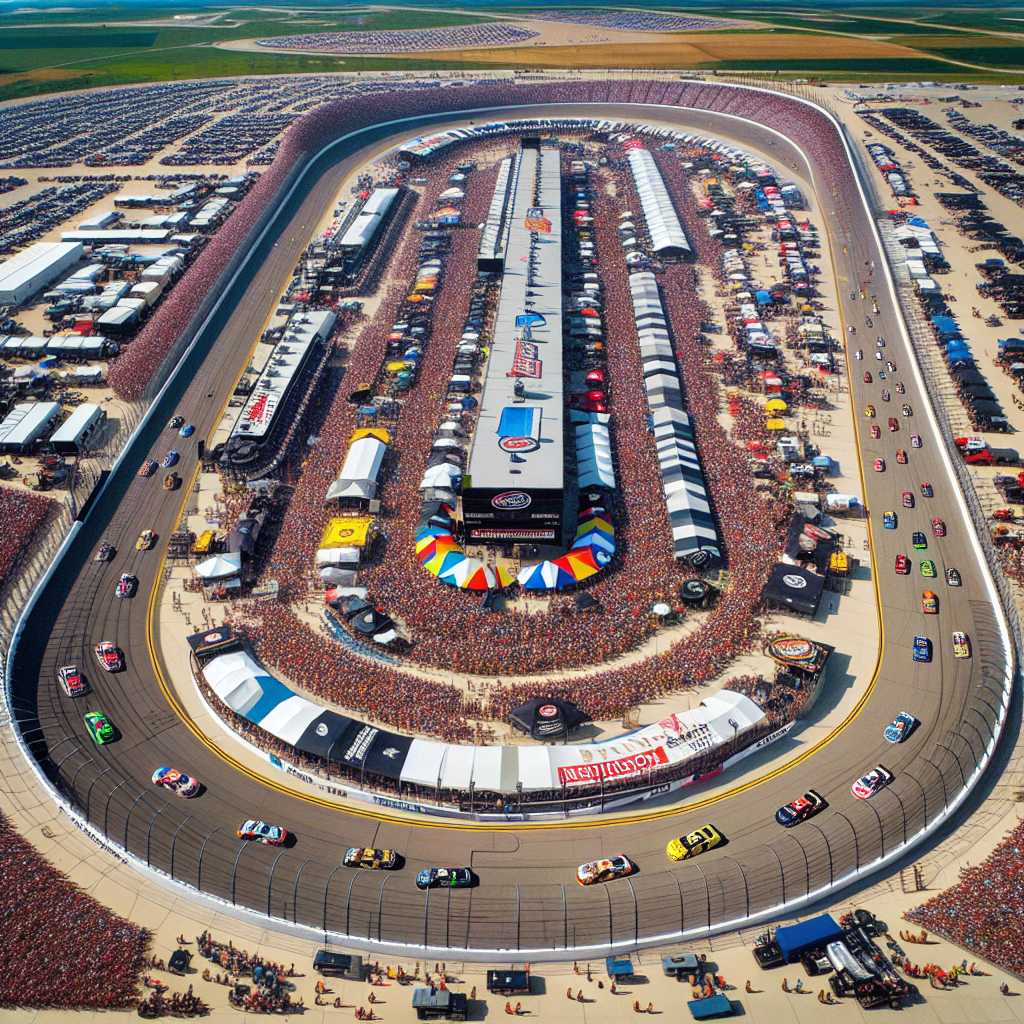The Allure and Impact of Michigan International Speedway
Michigan International Speedway stands as an emblem of American motorsports, nestled in the Irish Hills of Brooklyn, Michigan. Famed for its D-shaped oval track and high-paced action, this speedway not only entertains countless fans with its riveting races but also commands a significant economic impact and a storied place in auto racing history. This article explores the key aspects of Michigan International Speedway, from its construction and design to the events it hosts, along with its influence on the regional economy and motorsport culture.
Construction and History of the Great American Speedway
Michigan International Speedway (MIS) opened its gates in October 1968 and has since been a central hub for auto racing in the Midwest. Built by Lawrence H. LoPatin, a Detroit-area land developer, MIS was designed to be one of the country’s premier speedways. Today, the track bears witness to over five decades of changes, expansions, and modernizations, which have helped it maintain that status.
Over the years, MIS has undergone several ownership changes. Originally established under the ownership of American Raceways, it suffered financial difficulties leading to its purchase by Roger Penske in 1973. Under Penske’s leadership, many improvements were introduced to enhance the fan experience and compete with the growing number of racing venues in America. In 1999, it became part of the International Speedway Corporation (ISC), joining other notable circuits in their portfolio.
Technical Specifications and Track Design
With a capacity to host upwards of 70,000 spectators, Michigan International Speedway stands out with its two-mile (3.2 km) moderate-banked D-shaped speedway. The design caters to high speeds and provides fans with clear views of the track from virtually any seat. The speedway layout facilitates side-by-side racing, leading to thrilling finishes year after year.
The oval features 18-degree banking in the turns, a 12-degree pitch along the 3,600-foot front stretch, and 5 degrees on the backstretch. These attributes make MIS one of the fastest tracks on the NASCAR circuit—with average race speeds frequently topping 150 mph—and pose unique challenges for teams in terms of setup and strategy.
Major Events and Notable Races
The breadth of prestigious racing events at Michigan International Speedway serves as evidence of its prominence in motorsports. Most renowned for hosting NASCAR Cup Series events such as the FireKeepers Casino 400 and the Pure Michigan 400 (also known under various sponsorship names), MIS has also been a mainstay for events in the NASCAR Xfinity Series and the NASCAR Camping World Truck Series.
Beyond stock car racing staples, the speedway has seen events from INDYCAR series, USAC, ARCA, and even hosted concerts and music festivals, proving its versatility as an entertainment epicenter.
One historical moment at MIS was Mark Martin’s unforgettable triumph in the Truck Series race in 2006. While primarily considered a stock car racer with numerous Cup Series wins under his belt, Martin showed a commanding performance on one of NASCAR’s trickiest tracks—highlighting both his skill and the broader competitive spirit that saturates MIS’s environment.
Economic Influence and Community Engagement
Michigan International Speedway holds great significance beyond racing exploits—it is an economic engine for Southeast Michigan. The speedway stimulates local economies during race weekends by drawing colossal crowds, generating revenue for hotels, restaurants, shops, and other amenities. Many spectators camp at nearby sites for the event duration, further compounding financial inflow into local businesses.
MIS further integrates with its community through various initiatives. Educational programs with surrounding schools involve students in events around STEM education tied to racing tech and engineering pursuits. Environmental efforts have also been prioritized with projects like planting trees and utilizing green energy sources to advance sustainability goals.
